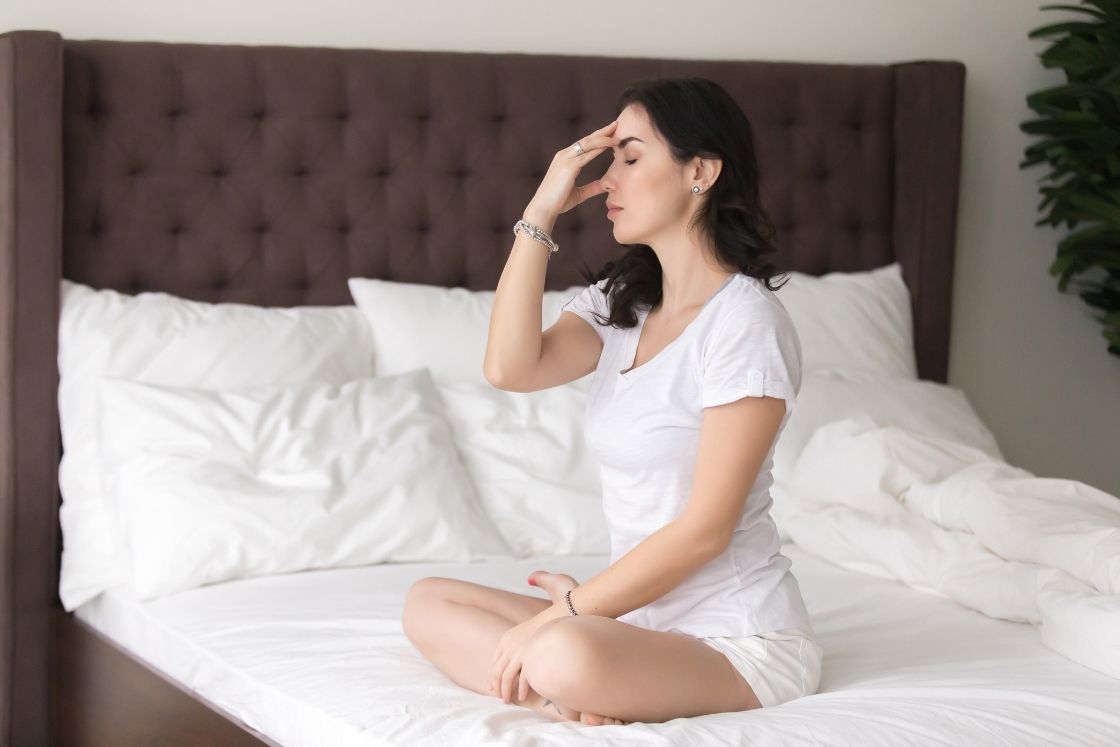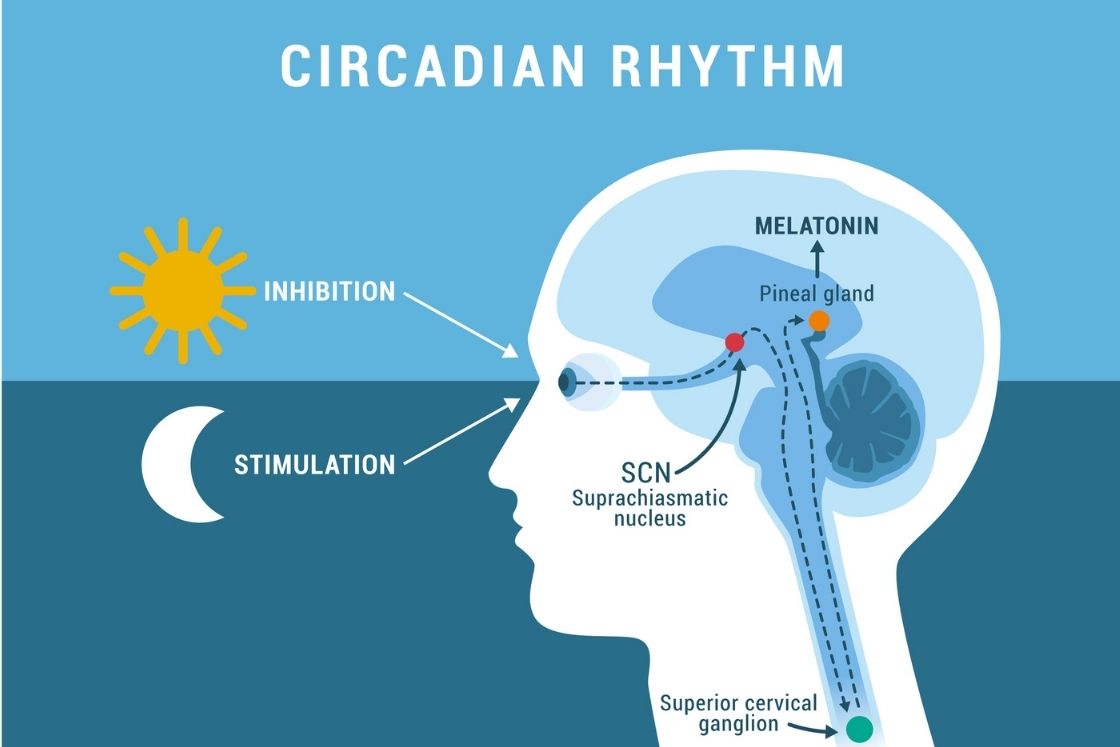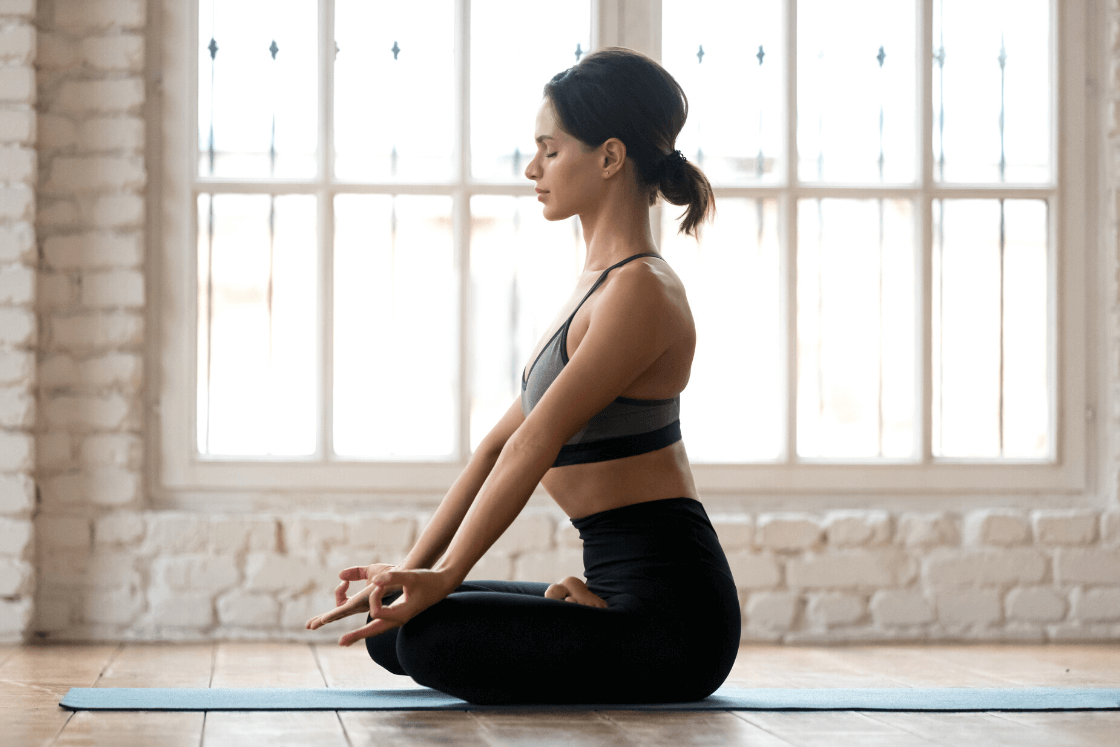- Pranayama & Sleep-Wake Cycle Relation
- Pranayama for Sleep
- Bhramari
- Chandra Bhedana
- Sama Vritti
- Kapalbhati
- Anulom Vilom

Breathing and sleep are two essential parts of our life. Sleep disorders aka Insomnia could have a number of factors.
Are You Insomniac?
How someone could reach over the conclusion of whether s/he is insomniac or not? Insomnia is a condition in which a person suffers difficulty in various stages of sleep, such as;
- Often wake up from the sleep
- Having difficulty in falling asleep
- Difficulty in returning back to sleep
- Wake up before the natural timing
- Feeling of restlessness after sleep
- Having low energy or dizziness throughout the day
By figuring out the above-stated factors, one can easily call themselves of being an insomniac.
No matter what the factor is, If you work on your breathing, it can positively affect the quality of sleep. Here’s where the role of yoga breathing techniques aka Pranayama comes into the play.
How Does Pranayama Help in Better Sleep?
To understand how exactly pranayama helps us to get better sleep, we need to know the sleep-wake cycle.
Sleep-wake cycle

Circadian rhythm and homeostatic drive are the two antagonistic processes responsible for the sleep-wake cycle. The hypothalamus (part of the pituitary gland) regulates the circadian rhythm (body’s internal clock) [efn_note] Circadian Rhythm https://www.sleepfoundation.org/circadian-rhythm [/efn_note] with the help of a special nucleus.
- Melatonin (a sleep hormone secrets through the pineal gland) induces sleep by the activity of that nucleus on the pineal gland.
- Light (zeitgebers) acts as a synchronizing agent to the nucleus, which inhibits the melatonin from the pineal gland. Ultimately, affects the sleep-wake cycle.
Whereas, homeostatic drive raise the tendency to sleep according to the duration of being awake. A metabolic reaction impacts the sleep-wake cycle produces adenosine during the day, whose amount raises the tendency to sleep. In this way, it completes the feedback.
Pranayama against the disturbed sleep-wake cycle
Improper sleeping patterns are considered as disturbances of the sleep-wake cycle.
The systematic breathing techniques of pranayama includes deep and calm inhales and exhales. Such breathing supplies oxygenated blood to the glands (pineal gland), which improves their functioning (melatonin). Increased blood supply to the cells raises their metabolic activities to cultivate favorable byproducts (adenosine). Deep Breathing techniques of yoga regulates the nerve activity in the parasympathetic system, which calms its effect causing difficulty in sleep.
Pranayama for Sleep
There are a number of pranayama techniques in yoga to induce relaxation and help in sleep. While performing any pranayama for sleep, follow these basic tips;
- Make sure room lights are dimmed
- Shut your eyelids to avoid any strain on the eyes
- In some Pranayama, you can put earplug additionally
- Avoid consuming caffeine before Pranayama
Try the below pranayama techniques and see which suits best to you for better sleep.
1. Bhramari Pranayama

This pranayama produces the sound humming bee (‘Hmmmmm’) with a vibration, which a practitioner can sense throughout their body. It has soothing and calming effects over the sleeplessness.
- Close your both ear by the middle fingers, apply very gentle pressure over the cartilage.
- Close your eyes by the use of your thumbs.
- Now, take a deep breath in through your nostrils and exhale by making a ‘humming sound’ like the ‘bee’.
- Feel the sound vibrating your every body part.
- Inhale and exhale in the same manner for at least 5 times.
Bhramari pranayama stimulates the pineal gland to secrete melatonin [efn_note] Immediate Effects of Bhramari Pranayama on Resting Cardiovascular Parameters in Healthy Adolescents https://www.ncbi.nlm.nih.gov/pmc/articles/PMC4948385/ [/efn_note], which induces sleep.
When performed before sleep, it lowers the blood pressure which aids in sleeplessness.
It promotes sleep by promoting the soothing and calming effects on your eyes and mind.
Also Read: A Detailed Guide of Bhramari Pranayama
2. Chandra Bhedna Pranayama

Popularly know as left nostril breathing, brings your parasympathetic nervous system (rest & digest system) into action. It relaxes the stimulated brain activity and alleviates the chaos of the mind – Hence creates a better environment for sleep.
- Make Vishnu mudra with your right hand and bring it up near nostrils
- Close your right nostril with the right thumb
- Take a deep breath in through the left nostril
- Close left nostril, exhale out the inhaled air from the right nostril
- Again, close the right nostril – inhale left – exhale right
- Repeat the process 10 times
In this pranayama breath is inhale only through the left nostril. Our left nostril is said to be the entrance of moon energy (calm, cool) in yogic terminolgy – Which flows through the Ida Nadi.
In a control trial study [efn_note] Immediate effect of chandra nadi pranayama https://www.ncbi.nlm.nih.gov/pmc/articles/PMC3410188/ [/efn_note], Chandra bhedna pranayama has been shown to quickly reduce hypertension, systolic pressure, and pulse pressure. This tends to be very calming and can prepare your body for sleep.
Also Read: Detail Guide of Chandra Bhedna Pranayama
3. Sama Vritti Pranayama

Also known as box breathing, or square breathing mostly practiced because of its simple procedure and calming effect on the mind.
- Inhale, take a deep breath counting for 4 seconds.
- Hold the breath inside your lungs for 4 seconds.
- Then slowly start exhaling for 4 seconds.
- Finally, after exhaling completely, hold your lungs empty for 4 seconds.
- Repeat the process 5 times.
Also Read: Detailed Guide of Sama Vritti Pranayama (Box Breathing)
It’s a slow and deep breathing exercise to create a stress-busting effect. It has seen in Navy SEAL [efn_note] How To De-Stress In 5 Minutes Or Less, According To A Navy SEAL https://www.forbes.com/sites/nomanazish/2019/05/30/how-to-de-stress-in-5-minutes-or-less-according-to-a-navy-seal [/efn_note], box breathing technique helps you take control of your automatic breathing patterns. It increases the quality of sleep in short naps also.
4. Kapalbhati Pranayama

Sometimes before bed, a burst of energy automatically triggers in our body. It makes a little daunting to get sleep easily as soon as lie in bed. Kapalbhati pranayama is best breathing technique for such times.
- Come in a cross-legged posture like easy pose or lotus pose
- Place your hand on the lower abdomen, feel the expansion & contraction of abdomen with breathing in & out.
- Now take a deep breath in, fill the air all the way down to the lower abdomen
- Begin exhaling with rapid contraction of your abdomen wall followed by passive inhalation
- Repeat the process for 2 minutes.
A positive effect of kapalbhati has been shown on sleep disturbances in menopausal females in control trial study. It has observed in this study [efn_note] Effect of Kapalbhati on pelvic floor muscle strength in menopausal females http://www.pragatipublication.com/assets/uploads/doc/de7f2-323-331.16879.pdf [/efn_note], Kapalbhati like fast breathing exercise when done on regular basis produce parasympathetic dominance which calms that burst of energy before bed time.
Also Read: Kapalbhati Pranayama Benefits and How to do it Correctly
Also, practicing kapalbhati relieve the strain over the eyes, which improves the quality of sleep.
Increased blood circulation to the brain induces the centers concerned with the sleep.
Oxygenated blood supply helps in the refreshment and calms the hyperactivity of the brain before the sleep.
5. Anulom Vilom Pranayama

Another simple yet powerful breathing technique, Anulom vilom pranayama balances the activities in left and right side of the brain. By creating harmony between two lobes of the brain, it helps in getting sleep easily.
- Sit in a comfortable posture (sukhasana, padmasana).
- Close your right nostril by your right thumb inhale from your left nostril,
- Cose your left nostril with your index finger and exhale through your right nostril.
- This completes the Anulom Vilom Pranayama.
- Repeat the process for 5 times.
Also Read: Anulom Vilom: How to Do & it’s Benefits
Anulom Vilom purifies the subtle energy channels for Prana (life force), which restores the natural sleep process. It improves the concentration of the mind to induce deep sleep if practiced before sleep.
Final Words
Breathing techniques of yoga can be our natural antidote to bring the disturbed sleep cycle on track.
By alleviating work stress and opening the parasympathetic nervous system, it activates the rest & digest mechanisms in the brain. As soon as the brain gets this activation signal, it asks body muscles to come into a state of relaxation. It makes us more relaxed and we fall asleep as soon as we go to the bed.




